Watering eggplants in the open field
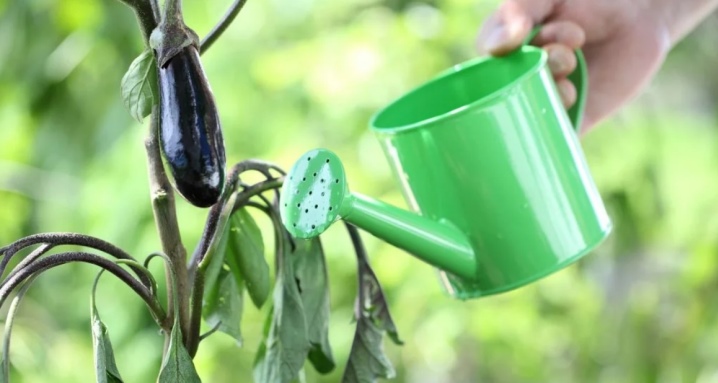
For a good harvest of eggplants growing in the open field, it is necessary to provide high-quality watering. The nightshade needs more moisture than peppers and tomatoes.

How often should you water?
Eggplants do not have a very strong root system. Their roots are in the upper soil layer and do not go to great depths, for this reason they are worse at delivering water to the plant. Lack of moisture can be fraught with the fall of the set fruits and even foliage.
The frequency of watering depends on climatic conditions, the amount of precipitation. Eggplant in any case requires regular irrigation, but not pouring, as is sometimes done in greenhouse complexes.
In open soil, moisture evaporation is many times more intense, especially if it is hot outside. In hot weather, a hard crust forms on the surface of the earth, which prevents the saturation of the nightshade crop with oxygen.
Mulching can be a solution - cover the bushes of plants with hay or dry needles.
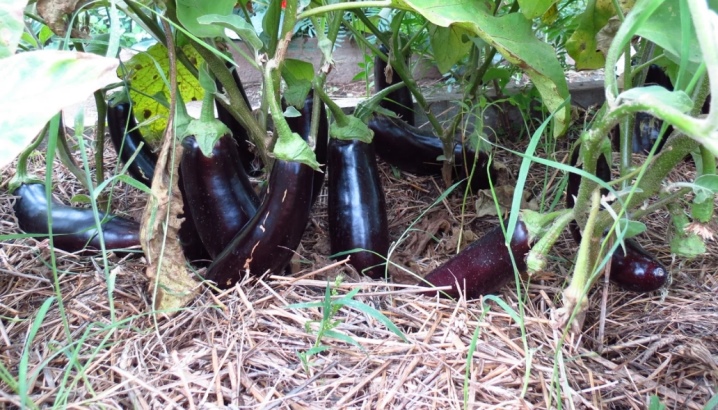
Follow these guidelines when irrigating eggplants.
- It is undesirable to irrigate the crop by sprinkling. The moisture will be on the foliage, causing disease.
- Pour water directly under the root or form grooves between the beds. Moisture should not be completely absorbed, until this moment and it is necessary to irrigate the rows.
- If possible, design a drip irrigation system in your garden. It is much more difficult to cope with this task outdoors than in a greenhouse complex.
- Use warm water that is the same temperature as the ground.
- For 1 sq. m of soil requires 7 liters of liquid. Gradually increase this amount to 15 liters.
The frequency of irrigation is influenced by numerous factors:
- climatic conditions;
- soil characteristics;
- the period of plant growth, the degree of their formation.
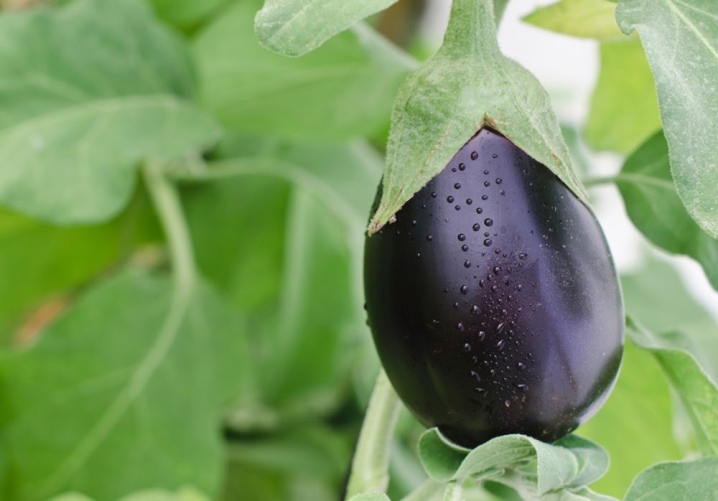
The frequency of watering is determined on an individual basis, guided by the existing conditions. Do not allow the top soil layer to dry out, avoid excessive moisture in the root area - this leads to the development of fungus and other diseases. Waterlogging is the reason why nightshade crops are reluctant to grow in swampy soil types.
When asked how many times a nightshade crop should be watered, it is difficult to give a definite answer. The amount of irrigation depends on the weather and the age of the eggplant. Seedlings do not need frequent watering: once a week is enough. During flowering, more rare watering is allowed, and during the period of fruit emergence, on the contrary, more frequent. Check the condition of the ground before irrigation.
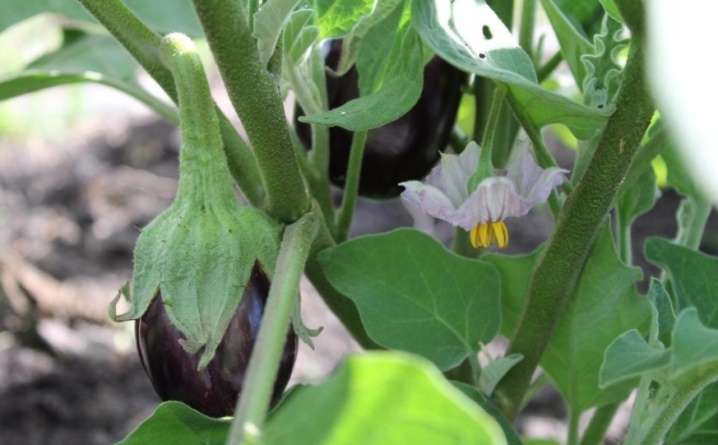
Loosen the top soil layer: if the soil underneath is wet, wait another day with irrigation. After heavy rainfall, watering may not be needed for about a week. The lack of moisture can be judged by the state of the crown of plants: in this case, the foliage becomes wilted and curls up into a tube. In such situations, it is permissible to resort to spraying, but only late in the evening, otherwise the water remaining on the foliage will lead to sunburn.
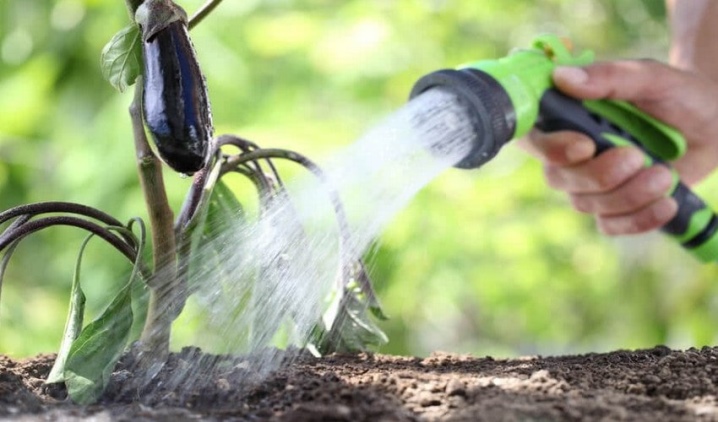
Young plants need irrigation at least 1-2 times a week, preferably in the evenings. At the initial stage of flowering, it is advisable to reduce watering, and as the ovary forms, increase it. If the eggplant is growing in a well-lit area and is exposed to sunlight throughout the day, it is preferable to irrigate in the morning to protect the foliage from burns.
For more effective moisture, loosen the soil around the plants ahead of irrigation. This will prevent deep penetration of moisture, and the rhizomes can be saturated with it to the maximum from the upper soil layer.
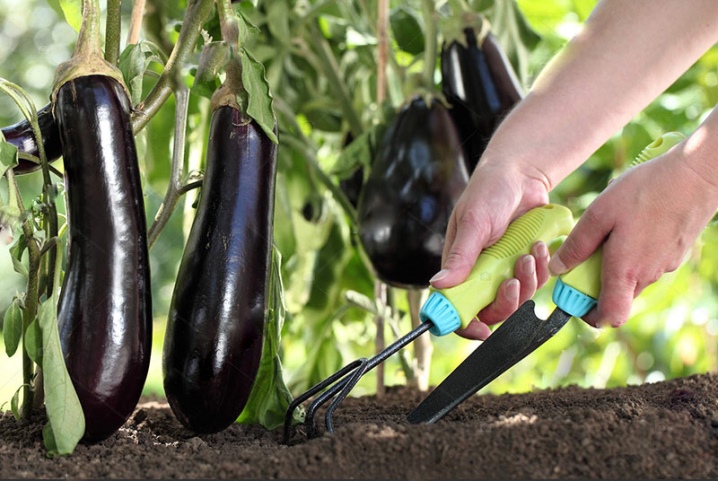
In the southern latitudes, where it is difficult to do without daily irrigation, watering is performed in the evenings, and loosening is performed in the morning hours. Everyday irrigation is necessary in hot and arid climates. In regions located in the middle lane, excessive moisture can be fraught with the death of the future harvest and the nightshade crop itself. For this reason, depending on the climate, the amount of irrigation can vary from 1 to 5 times a week.
Before the eggplant seedlings bloom, it is enough to irrigate it once every 7 days. Young bushes do not need a lot of moisture to harden. Additional irrigation may be due to top dressing.
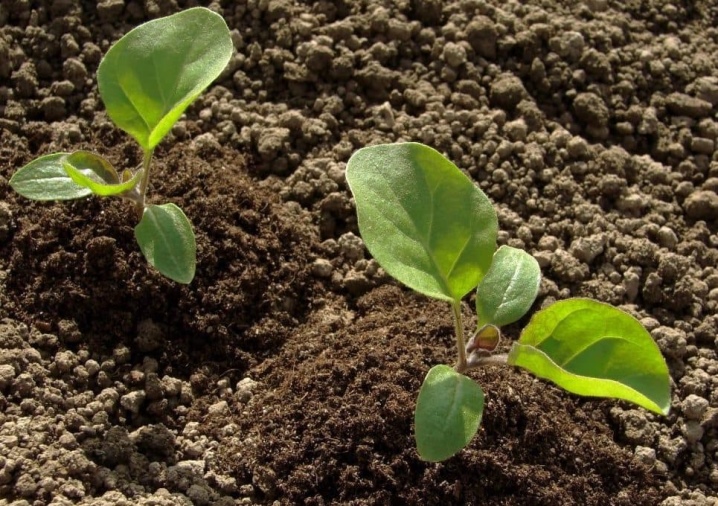
During the flowering period, moisten the soil 2 times a week. For 1 sq. m requires 12 liters of liquid. On hot days, the frequency of irrigation increases up to 5 times. Regular watering is alternated with top dressing. In the last summer month it gets cool at night, look at the state of the vegetable crop and, if necessary, reduce the amount of irrigation.

Water temperature and volume
Summer residents are interested in how much water is required to irrigate eggplants and what temperature it should have. On average, 10-15 liters of liquid are needed per 1 square meter of area. During the fruiting period, this figure increases to 15-30 liters per 1 sq. M.
To moisten the seedlings, use water at a temperature of 24-28 degrees. The seedlings are watered with water heated to 26-30 degrees.
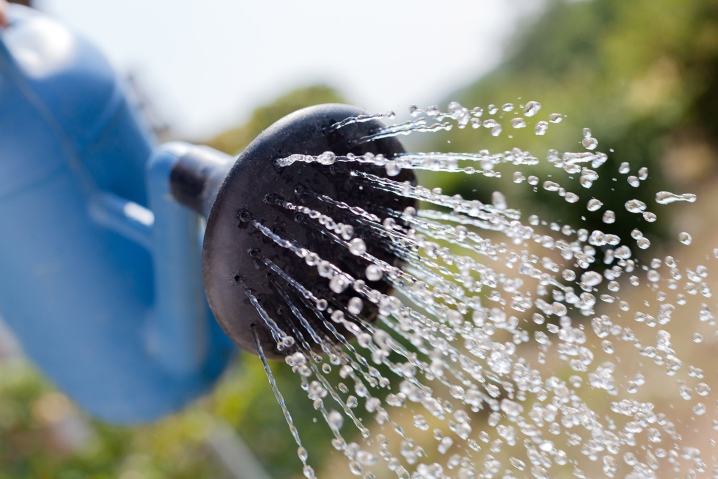
Watering features
A competent approach to irrigation of eggplants growing in the open field will ensure their normal development. After planting a nightshade crop, avoid over-irrigation.
Pour the liquid under the rhizomes of the plants or in special grooves made next to the beds. Do not open the roots - this will lead to rotting of the plants. Correctly irrigated eggplants, you can significantly increase yields.
Watering is best done using a spray bottle. Install it on a hose with a shut-off valve. If possible, consider the amount of water used for irrigation using a meter.
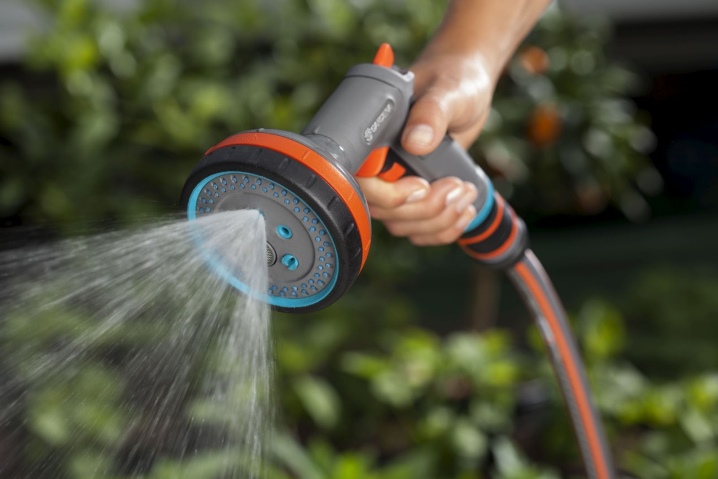
Some summer residents use tanks, the volume of which is designed for the entire area of the eggplant beds. The containers are painted in black color to warm water under the influence of sunlight. The hoses are connected through a union with a valve.
Fundamental rules:
- nightshade crop grows well when soil moisture is 80-85%;
- immediately after planting seedlings in open ground, they are watered with a watering can;
- if it rains, irrigation activities are suspended until dry weather returns;
- in case of excessive heat, care must be taken to ensure that the land under the nightshade crop does not dry out;
- soil mulching helps to reduce the loss of working moisture.
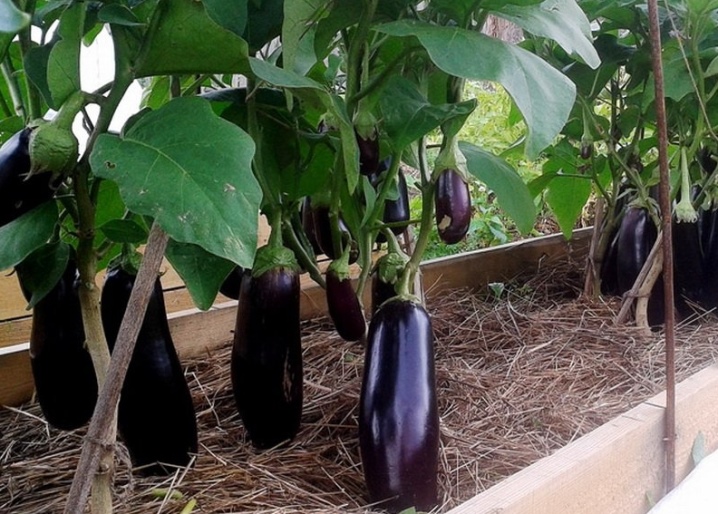
There are summer residents who resort to drip irrigation to moisten eggplant beds. The tapes are laid directly on the soil surface or buried 7-10 cm by digging trenches. The irrigation system is set up once. After that, she provides watering of vegetable crops throughout the season.
One of the advantages of the drip technique is to prevent waterlogging of the soil in beds with nightshade crops. Thanks to this, it is possible to avoid a decrease in yield. The frequency of water supply varies from site to site. These parameters are influenced by the composition of the soil. These indicators are taken into account when choosing a particular drip irrigation system.
The main task of the equipment is to completely moisten the planting area. The use of drip systems makes it possible to avoid negative trends in the development of nightshade culture. When a certain humidity threshold is reached, the device starts dispensing water to the eggplants.
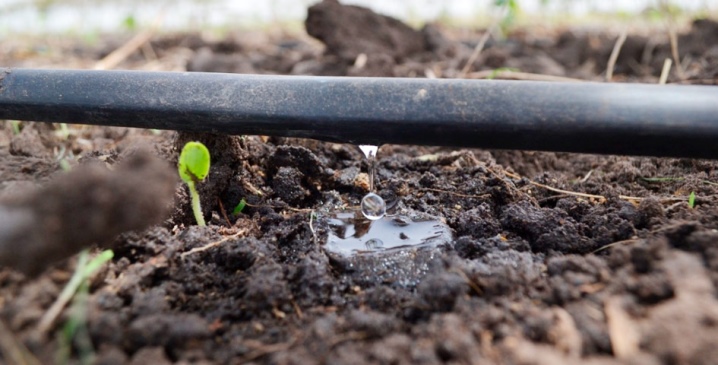
Eggplant is a rather capricious culture.Watering them properly will guarantee a large harvest.
For information on how to properly water eggplants, see the next video.













The comment was sent successfully.